Traveler Special Report: Drought Carries Crippling Economic Impacts
By Jonathan Horwitz
Editor's note: This is the second article in a series of stories Nationa Parks Traveler is producing on how the long-running drought in the Southwest is impacting units of the National Park System.
This summer’s intense monsoonal weather is too little too late for Page, Arizona, where the Southwest’s long-running drought has forced pleasure boats out of Lake Powell and put many of the gateway town’s businesses under water.
One hotel in Page already has filed for bankruptcy due to plummeting reservations, according to city leaders, and a houseboat operator canceled 400 reservations in late July after falling lake levels forced the National Park Service at Glen Canyon National Recreation Area in Utah and Arizona to close boat launch ramps.
The small border town that is the key gateway to Lake Powell is a prime example that the economic toll of ongoing drought linked to climate change could be staggering to both tourism and infrastructure in the Southwest’s national parks and surrounding communities. While little research has been done to determine specific impacts, it’s clear that extreme weather and increased heat, fire, and water scarcity is being accompanied by financial calamity.
It’s no secret that visitors bring badly needed dollars into the nation’s parks, forests, monuments, and their gateway communities. Last year alone, the National Park System’s 423 units poured $28.6 billion into the country’s coffers, according to the NPS.
But as temperatures continue to heat up and drought plagues major portions of the country, scientists and administrators have been slow to evaluate and plan for a drop off in visitors.
That’s right — a drop off in visitors.
Not All Parks Are Overcrowded
It sounds absurd, considering that overcrowding at national parks provoked a Senate hearing in late July.
But the huge economic boon brought on by those crowds is being threatened by warm and dry conditions, along with the wildfires they often spark. In 2015, an NPS research team found that parks tourism declines sharply when monthly average temperatures rise above 77 degrees Fahrenheit.
More recently, in one of the few studies conducted on summer tourism and drought, Man-Keun Kim, an economist at Utah State University, used statistical modeling to predict that hot, dry weather could result in yearly regional economic losses of $11.5 million to $17.3 million in six Utah counties close to parks starting this year; how long the losses continue depends on the extent of the drought.
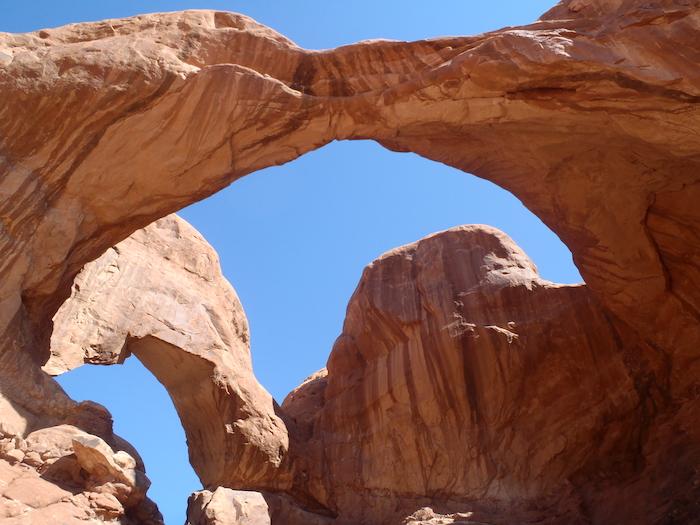
Hotter temperatures generated by climate change could cost communities around Utah's national parks/Kurt Repanshek file
He says gas stations, grocery stores, hotels, campsites, recreation industries, restaurants, retailers, and transportation providers will bear the brunt of the loss as fewer visitors demand their services. He expects other local businesses will suffer indirect losses from drought as overall economic activity and average household incomes decrease in tourism-dependent gateway communities to parks.
Overall, Kim says economic losses in Garfield, Grand, Kane, San Juan, Washington, and Wayne counties in Utah will include:
- Between $7 million and $11 million decline in visitor spending, depending on drought severity
- As many as 116,000 fewer visitors to Arches, Canyonlands, and Capitol Reef national parks relative to 2018
- Between 126 and 190 jobs lost and a forfeiture of between $4 million and $5 million in labor income.
“I think we will see these losses by the end of this year as Utah is experiencing extreme drought,” Kim wrote in an email to the Traveler.
His prediction might sound alarmist just weeks after the Traveler called overcrowding a “crisis in the National Park System.”
However, Kim expects the economic effects of drought to worsen in stride with climate change.
“Simply, summer will be too hot to visit southern Utah and with drought and megafires, it will be worse,” Kim wrote.
Increased frequency of wildfires might also deter parks visitation and spur related economic impacts, he added.
A peer-reviewed paper Kim co-authored in 2019 with ecologist Paul Jakus found a significant and causal link between the visibility, safety, and health effects of seasonal wildfires and fewer recreational visits to Utah’s national parks that resulted in yearly losses up to $4.5 million and 50 jobs in rural counties heavily reliant upon parks tourism.
These numbers might sound like a drop in the bucket relative to America’s $28.6 billion annual national parks economy, but they have an outsized impact on gateway communities such as Page.
Monsoons Arrived, But Didn't Reverse The Trend
Though this summer’s monsoonal weather, which has pulled much needed moisture into the Southwest and north through Colorado and Wyoming into Montana has been described as the most active since 2015, it’s too little too late to benefit Lake Powell.
Last winter’s sparse snowpack in the Rocky Mountains, coupled with woefully dry soils that absorbed moisture like a sponge, couldn’t produce enough runoff to offset the decline in runoff to the lake. As a result, Lake Powell’s elevation has steadily dropped through the summer, and as it did the Park Service was forced to close three boat ramps, while three others were limited in operation. The Wahweap Main ramp was closed to houseboats in mid-July, and it could close to all motorized vessels in days.
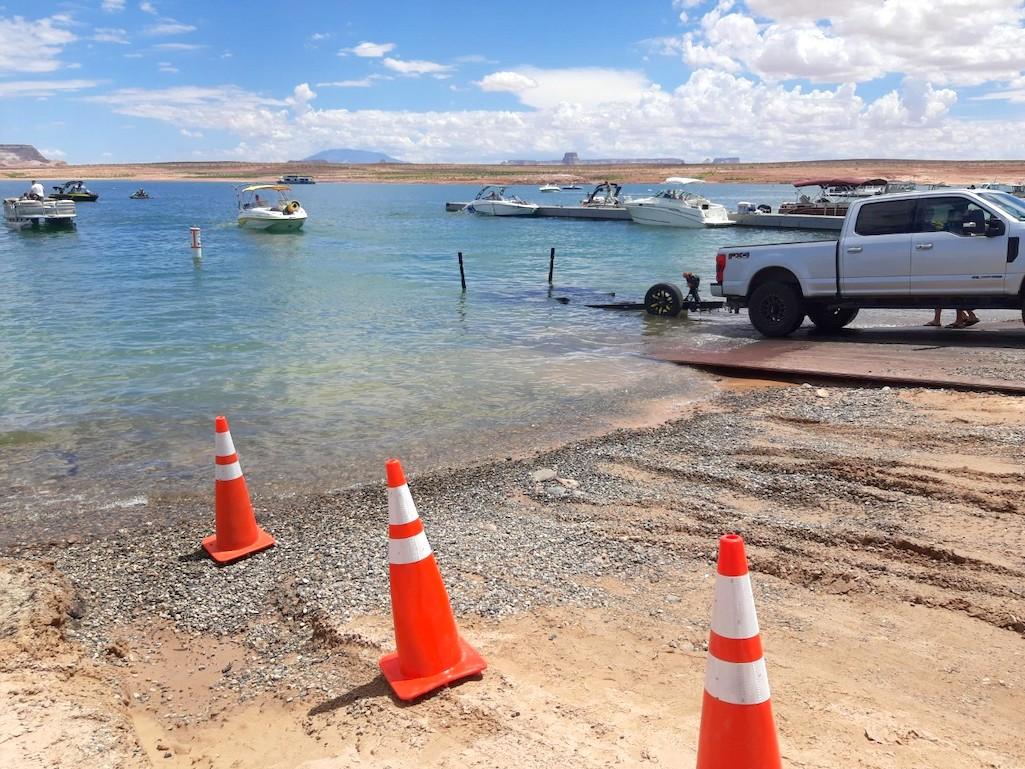
Dropping water levels had Glen Canyon NRA officials planning to close the main Wahweap boat ramp in August/NPS file
During a July Senate hearing on national parks, Sen. Mark Kelly of Arizona raised grave concerns about the drought’s economic impacts on Page.
Citing a letter from Page Mayor Bill Diak, Kelly said, “If this [drought] continues unmitigated, it could crush the economy of Page.”
City of Page City Manager Darren Coldwell says a houseboat operator had to cancel more than 400 reservations after the National Park Service closed the Wahweap Main Launch Ramp to houseboats on July 17. On July 30, the NPS announced that the main ramp will likely become unusable for all boats within days.
“You can imagine the domino effect that that has on business,” Coldwell said. “Every one of those people were coming to Page. They buy their groceries here. They eat out. Oftentimes, they spend a night in one of the hotels.”
Coldwell says drought was the final nail in the coffin for a major hotel in Page that recently filed for bankruptcy.
“They’re coming out of COVID on top,” Coldwell said. “Then what happens? The drought.”
He estimates that local hotel prices listed on Travelocity are down more than 60 percent from their peak prices two summers ago.
Gregg Martinez, head of economic development for the City of Page, added that the occupancy rate at Page’s Courtyard Marriott is around 50 percent.
Martinez says a representative from Marriott told him the occupancy rate is 30 percent lower than the hotel chain’s projection for the month of July, and the underperformance is a symptom of drought.
Martinez notes that hotels across town are faring worse during the drought than they did during the first summer of COVID. “I can tell you that hotels are experiencing a downward trend vs. this time last year almost exclusively because of the lake levels.”

Page officials say the lack of houseboats on Lake Powell should make the lake more inviting to kayakers/Kurt Repanshek file
Although the precarious status of the boat launches causes the most evident effects of drought on Page’s economy, Coldwell and Martinez blame a second factor for fueling drought’s toll on tourism — misinformation.
“With some of the press that we’ve had, there's a misconception that there's no water in the lake,” Coldwell said.
For his part, Martinez says he’s working with media outlets from Los Angeles to Phoenix to try to get the word out that Page is still open for business.
“If you're a kayaker, it is your dream that there are fewer motorized boats on Lake Powell right now,” he said.
Deborah Thomas, a professor of hazards and health geography at the University of North Carolina, Charlotte, says misinformation about drought and fires has played a role in deterring outdoor tourism before.
Amidst a series of wildfires during Colorado’s 2002 drought, then-Governor Bill Owens told reporters, “It looks like all of Colorado is burning today.” He compared thick smoke and ash over Denver to a “nuclear winter.”
Before he walked back his word choice, Thomas heard Owen’s message on a CNN International newscast while traveling in Nepal. “That’s how far and wide the message went,” she said.
Thomas says the widespread message caused tourism and recreation cancellations and propelled mountain resort towns into action. Steamboat Springs started a marketing campaign called “Got Water? We do!”
Despite local marketing campaigns, a well-cited paper estimated that the 2002 drought cost Colorado’s tourism and recreation sectors approximately $1.7 billion. “Enormous and severe drought impacts were found for state and county parks, the boating industry, the rafting industry, the fishing industry, the ski industry, and regional small businesses such as hotels and motels,” the study reads.
Thomas’s follow-up studies suggest that the economic impacts of drought disproportionately affect low-paid service workers and people of color, but the precise effects are unknown.
“The concepts of equity and social vulnerability interplay with economics,” Thomas said. “Those who bear the impact at a greater proportion are your service workers who make minimum wage and can’t afford to live in resort communities. In Colorado and in many gateway communities, these are often Hispanic and Latinx workers.”
Thomas says there is still much to learn about the relationship between drought, labor economics, and summer tourism, largely because private and proprietary data are a major hold-up to advancing research on drought and tourism economics.
But improving technology is beginning to make it clearer how those in search of recreation respond to weather, wildfire, and other natural phenomena.
Megan Lawson, lead researcher on outdoor recreation and economic development for Headwaters Economics, an independent, nonprofit research group based in Montana, says statistical models that incorporate data from apps like Strava, the fitness tracker, social media, and Google Trends, combined with weather data and air quality data, were able to forecast summer trail usage at several trailheads in Montana with up to 98 percent accuracy. She says these models could eventually improve recreation management nationally and help understand the relationship between public land use and natural hazards including droughts and wildfires.
The ability to accurately predict how weather and climate events affect the recreation economy could help economists and policymakers better understand how the labor market will react.
“Understanding who is benefiting and who is bearing the costs of drought is definitely something that economists have inadequately addressed,” Lawson said. “We know it’s going to affect folks working in the service sector a lot more intensely than the remote worker or a second home owner. We as economists are just starting to think deeply about how to address that.”
While park administrators and economists try to predict how drought might affect tourism in the future, drought’s economic impacts on infrastructure are imminent and expensive.
Coldwell says it will cost the Park Service millions of dollars to fix the boat ramps at Lake Powell, but he can’t be more specific about a number.
Downstream on the Colorado, low water levels approach cut-off points for power generation at the Hoover Dam.
The Bureau of Reclamation, which manages the dam, says hydropower efficiency has dropped by 25 percent due to historically low water levels. A March hydrology report from the agency says there is a high probability that hydropower generation will continue to decline between 0.5 percent to 2.5 percent from year to year for the next five years.
And although it may seem counterintuitive in a drought, it is widely accepted that climate change exacerbates the likelihood of severe flooding events in the wake of droughts.
Experts say that flooding tends to cause more destruction after droughts when landslides are more likely to occur because soils are drier, eroded, or charred from water scarcity and wildfire. The lack of vegetation – burned off by fires – makes the soils less stable and more susceptible to slides when inundated by rain, too. That’s just what happened in Colorado when monsoonal storms indefinitely shut down nearly 50 miles of Interstate 70 near Glenwood Springs with mudslides and associated debris this past weekend.
“It’s a positive feedback cycle,” says NPS ecologist Andy Hubbard. “You have all these interacting factors and then you take this giant magnifying force multiplier of climate change on top of it. You get wildfires in upland areas that drive erosion. You lose soil cover and vegetation. Then, you can get unusually high rainfall, and we’ve had some big flood events from that.”
According to a 2021 NPS climate adaptation report, park managers must consider the possibility of more severe flooding as well as an increase in the duration between precipitation events when designing stormwater systems and water resource management plans.

“The rains blew out every single one of our roads,” said Mojave National Preserve Science Advisor Debra Hughson. “It took pieces of pavement off Essex Road and floated them down the arroyo like they were chunks of iceberg.”
In addition, the report says that the severity and frequency of rainfall must be considered in plans to preserve historic buildings and significant roadways through parks.
In late July, after a year of almost no precipitation, monsoon rains dumped three inches of rain in one hour across Mojave National Preserve.
“The rains blew out every single one of our roads,” said Mojave National Preserve Science Advisor Debra Hughson. “It took pieces of pavement off Essex Road and floated them down the arroyo like they were chunks of iceberg.”
She says last year’s Dome Fire and this year’s drought — plus about $250 million of overdue roadwork — caused the mess.
“We have this burnt landscape with the skeletons of Joshua Trees sort of waiting to fall over dead,” Hughson said. “Then we get precipitation like that which mobilizes sediment, and all that gravel picks up and finds a new place to be.”
To address looming infrastructure challenges, President Biden’s Fiscal Year 2022 budget proposes more than $1 billion for the National Park Service to modernize infrastructure and respond to climate change.
For now, parks like Mojave National Preserve are struggling to build resilience and adapt.
“We have a very small number of people and everybody's trying as hard as they can,” Hughson said. “But when you get three inches of rain that wipes out every single one of your roads after a year and a half of drought, you just kind of deal with it as best you can with the people that you have and try to keep up good spirits.”
Previous articles in this series:
Traveler Special Report: Drought, Heat Taking A Toll On National Parks In Southwest



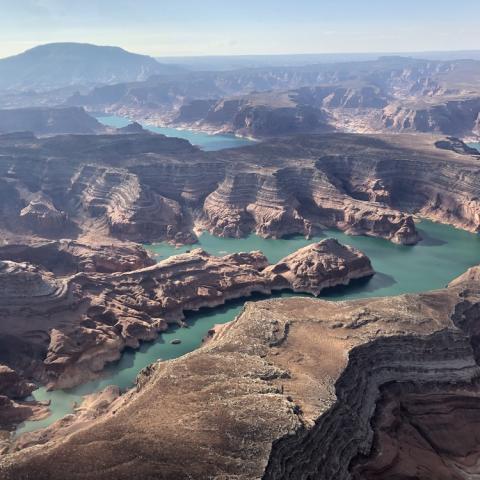
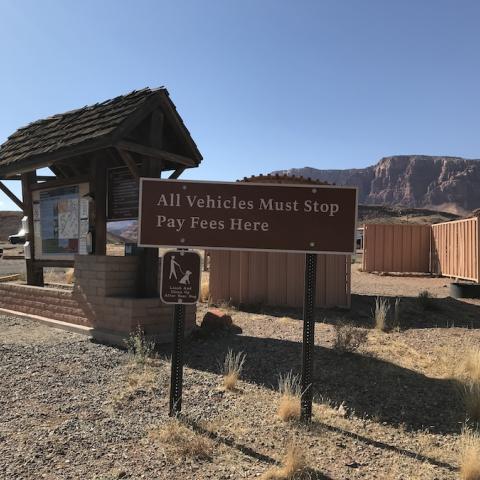
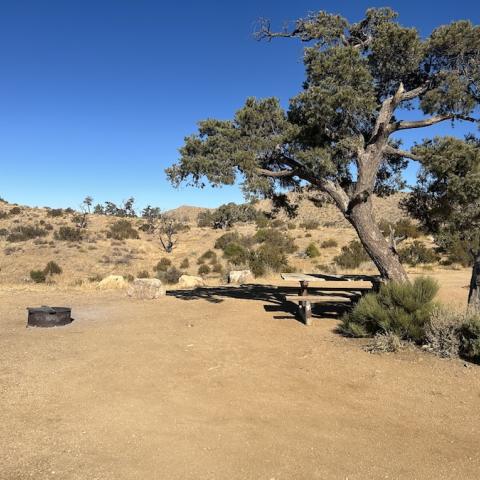
 Support Essential Coverage of Essential Places
Support Essential Coverage of Essential Places







Comments
Almost 150 years ago, John Wesley Powell, who knew the area better than anyone else at the time having been the first person to lead an expedition down the Colorado through Glen Canyon and the Grand Canyon, warned that the Southwest was too dry to support all the irrigation projects being proposed. Congress did not listen and gave in to developers. The reservoir that tarnishes Powell's name and belies all his accomplishments was a product of overestimating the region's water resources and making water allocations to neighboring states that exceeded what nature provided even before climate change made things worse. Spending money to extend marina docks further into the dwindling reservoir is pure folly.